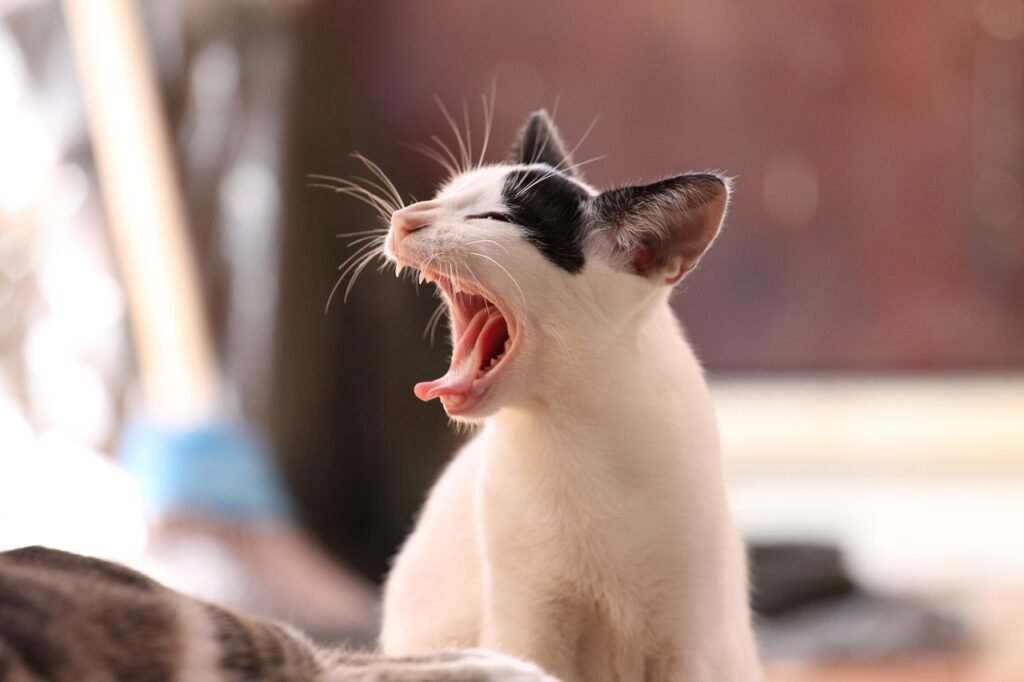
When it comes to cat care, dental hygiene is often an overlooked aspect. However, just like humans, cats require regular dental attention to maintain their overall health and well-being. Dental issues in cats can lead to more serious health problems if left untreated. This comprehensive guide, “Purrfect Smiles: Essential Cat Dental Care,” will help you understand the importance of cat dental care, recognize common dental issues, and implement effective dental hygiene practices to ensure your feline friend enjoys a healthy and happy life.
The Importance of Cat Dental Care
Good dental hygiene is crucial for cats as it impacts their overall health. Poor dental care can lead to periodontal disease, tooth resorption, and other health complications. Regular dental care helps prevent pain, discomfort, and costly veterinary treatments. Moreover, a healthy mouth contributes to a cat’s ability to eat comfortably and maintain a balanced diet, which is essential for its energy levels and longevity.
Understanding Cat Dental Anatomy
Cats have 30 adult teeth, which include incisors, canines, premolars, and molars. Each type of tooth has a specific function, and maintaining their health is crucial for the cat’s overall well-being. Cats use their incisors for grooming, canines for catching and holding prey, and their premolars and molars for shearing and grinding food. Understanding this anatomy can help you identify areas that require particular attention during dental care routines.
Common Dental Issues in Cats
Periodontal Disease
Periodontal disease is one of the most common dental issues in cats and occurs when plaque builds up on the teeth, leading to inflammation of the gums and surrounding structures. If not treated, it can result in tooth loss and severe pain.
Tooth Resorption
Tooth resorption is a condition where the tooth structure breaks down and is absorbed back into the cat’s body. It can be very painful and often requires veterinary intervention.
Gingivitis
Gingivitis is the inflammation of the gums, which can lead to more severe periodontal disease if neglected. It is often characterized by red, swollen gums, and bad breath.
Stomatitis
Stomatitis is a more severe form of gum disease that involves widespread inflammation within the mouth. It can be extremely painful and may require a combination of medical treatments and dental care.
Signs of Dental Problems in Cats
Recognizing the signs of dental issues early can prevent further complications. Common signs include:
- Bad breath
- Red or swollen gums
- Difficulty eating or loss of appetite
- Drooling or pawing at the mouth
- Bleeding from the mouth
- Loose or missing teeth
Establishing a Cat Dental Care Routine
Brushing Your Cat’s Teeth
Brushing your cat’s teeth is the most effective way to maintain dental health. Use a cat-specific toothbrush and toothpaste. Start slowly, allowing your cat to get used to the process, and gradually build up to regular brushing.
Dental Treats and Toys
Dental treats and toys can help reduce plaque buildup. Look for products that are specifically designed to promote dental health, and consult with your veterinarian for recommendations.
Regular Veterinary Check-ups
Regular veterinary check-ups are essential for monitoring your cat’s dental health. Your veterinarian can conduct professional cleanings and identify any potential issues early on.
Preventive Measures for Cat Dental Health
Prevention is key to maintaining optimal dental health in cats. In addition to regular brushing and veterinary check-ups, consider the following preventive measures:
- Provide a balanced diet that supports dental health.
- Ensure your cat has access to plenty of fresh water.
- Incorporate dental supplements if recommended by your vet.
- Foster a stress-free environment to reduce the risk of stress-related dental issues.
Understanding Professional Dental Cleaning for Cats
Professional dental cleaning is sometimes necessary to maintain your cat’s dental health. This procedure is usually performed under anesthesia and involves scaling, polishing, and a thorough examination of the teeth and gums. Your veterinarian will determine the frequency of these cleanings based on your cat’s individual needs.
Addressing Common Myths About Cat Dental Care
Myth: Cats Don’t Need Dental Care
Many cat owners believe that their pets do not need dental care. However, dental issues can lead to serious health problems if not addressed. Regular dental care is essential for every cat.
Myth: Bad Breath is Normal in Cats
While mild odor can be normal, persistent bad breath may be a sign of dental issues such as gingivitis or periodontal disease. It is important to investigate the cause of bad breath and seek veterinary advice if necessary.
Myth: Dry Food Cleans Cat Teeth
While some dry foods are formulated to help reduce plaque, they are not a substitute for regular dental care practices like brushing. A comprehensive dental care routine is necessary for optimal oral health.
Conclusion
“Purrfect Smiles: Essential Cat Dental Care” emphasizes the importance of maintaining good dental hygiene for your feline friends. By understanding common dental issues, recognizing early signs of problems, and establishing a regular dental care routine, you can ensure your cat enjoys a healthy mouth and overall well-being. Remember, a healthy cat is a happy cat, and taking the time to care for their dental health will contribute to their quality of life and longevity.
#ChatGPT assisted in the creation of this article.






